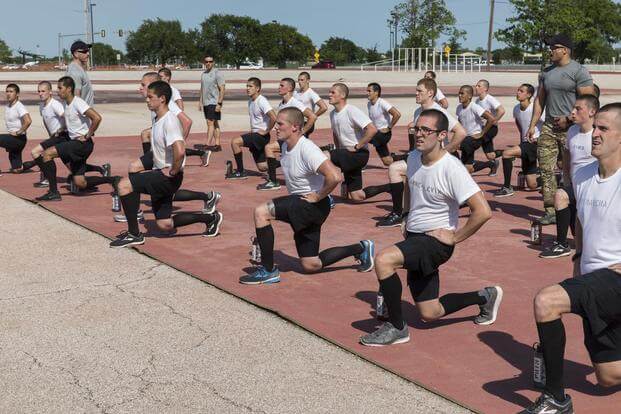New, robust initiatives to bring in highly skilled troops are bringing down the attrition rate among the Air Force's elite battlefield airmen, two members of the community told reporters at the Pentagon this week.
The attrition rate for battlefield airmen has declined to roughly 70 percent, said Master Sgt. Robert Gutierrez, superintendent of standards and evaluation at Joint Base San Antonio-Lackland. While each of the Air Force Specialty Codes varies, the average attrition rate for the community hovered around 80 percent throughout initial selection and training just a few years ago.
"How we've come to this point now is through innovation and change," he said.
Implementing the Battlefield Airmen Preparatory Course in recent months has changed the outlook because "we are making individuals who come from [Basic Military Training] better, faster, stronger and more mentally resilient," Gutierrez said.
Related content:
- Air Force Special Operations Forces Train for Next Dynamic Battlefront
- AF Cross Recipient: 'Remarkable' Fellow Airman Up for Medal of Honor
- Air Force to Double Number of Combat Aviation Advisors
Both Air Education and Training Command and Air Force Special Operations Command have brought in personal coaches to aid in physical therapy and training techniques, officials said.
Meanwhile AFSOC and the Air Force as a whole are benefiting from new technologies that will help troops navigate increasingly contested battlefield environments.
"We're going to bring in some more technology shortly," said Air Force Master Sgt. Thomas Gunnell, a Tactical Air Control Party airman assigned to the 26th Special Tactics Squadron at Cannon Air Force Base, New Mexico. "We have some things right on the precipice that are going to get us right to the point where we're able to do things at a more denied environment, to get back to that kind of training."
Gunnell and Gutierrez spoke Wednesday at the Pentagon during a Defense Department-hosted "lethality series."
"We're right on the edge where we can take that fight" into a higher threat environment, "with the precision that we need to do it with," Gunnell said.
The future tech could amplify just how battlefield airmen can and will fit into high-end fights with near-peer adversaries.
While the National Defense Strategy focuses on China and Russia and the re-emergence of great power competition, it also gives the Air Force specific guidance on "retaining irregular warfare [as] a core competency," Air Force Secretary Heather Wilson told Military.com in May.
Battlefield airmen "have a role to play there; the allies and partners as well," she said during a trip to Hurlburt Field, Florida.
Special operations acts as a catalyst to "expanding the competitive space; that's what [Air Force] Special Operations Command does," she said.
Gunnell said evolving technology has benefited spec ops forces, even in simpler equipment that is in high demand to conduct operations.
For example, airmen calling in airstrikes today are using equipment with vastly improved visuals and information transfer just in video feed compared with what combat controllers or Tactical Air Control Party airmen were using a decade ago.
"Kinetic strikes in which we're delivering precision munitions ... you can look at feeds, and get coordinates and use precision munitions that are delivered right on the exact spot that you want it, at the exact time that you wanted it, and with that, that is the single greatest thing that I have seen in [tandem with] coordination and practice" of training for that mission, Gunnell said.
In addition to battlefield operations -- something that has been at the forefront of the AFSOC community's training since 9/11 -- "airfield seizure and austere airfield controller are a major part of the [combat controller's] mission set," Gutierrez said.
In the wake of a resurgent Russia -- as Moscow continues to dabble in hybrid warfare techniques in eastern Ukraine -- airmen have been training to that dynamic battlefront, which actually is "the bread and butter of [that] career field," he added.
The certified FAA air traffic controllers train to go into hostile environments to "establish assault zones or airfields, while simultaneously conducting air traffic control, fire support, command and control, direct action, counter-terrorism, foreign internal defense, humanitarian assistance, and special reconnaissance," according to the Air Force.
Deploying undetected into an environment, "units can assess, open and control major airfields to clandestine dirt strips in either permissive or hostile locations," 1st Lt. Jaclyn Pienkowski, spokeswoman for the 24th Special Operations Wing at Hurlburt, told Military.com in May.
"It's not always seen all the time, but we are consistently training toward that mission set all the time. We will always be prepared for that," Gutierrez said.
-- Oriana Pawlyk can be reached at oriana.pawlyk@military.com. Follow her on Twitter at @Oriana0214.










